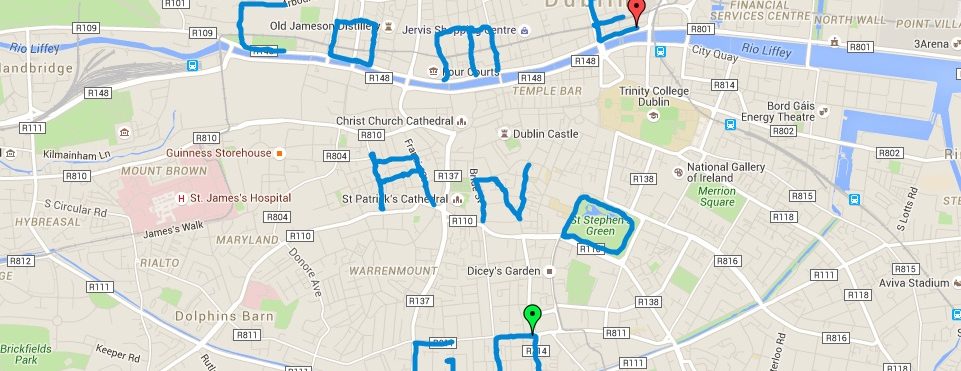
O laboratório PLAN sobre mídias locativas e pervasivas realizou em 2005 o projeto Track. Vocês podem ver a descrição do projetos, vídeos e fotos das performances aqui. O objetivo é mapear caminhos e fazer com que outras pessoas possam passar pelos seus caminhos ouvindo os batimentos do seu corpo, as musicas que você estava ouvindo…Exagerando seria uma espécie de “simstim”, dispositivo que permitia que uma pessoa plugasse na outra como apresentado por W. Gibson em Neuromancer. Para mais sobre Track:

“== CONCEPT ==
Track aims at enabling people to get in the shoes of strangers when crossing their paths and to experience trails of their lives: people leaving a personal trail along a path (e.g. the music they are listening to, their heartbeat, etc), as well as discovering and following the trails of others around them.
== TECHNOLOGY ==
Technology used in the Track project would include a GPS-enabled mobile device connected to content generator(s) (e.g. microphone, MP3 player, biometric sensor…) and corresponding playback actuators (e.g. headphones, haptic actuators…).
== DESIGN PROCESS ==
The project’s concept originated from Malcolm Hall’s idea of crossing the paths taken by other people during a day, and accessing blogs or urls connected to these paths. It evolved into the current concept during brainstorming sessions.
We prototyped the concept in three different ways, with:
– video scenarios exemplifying possible ways in which the device could work or could be used
– a PDA prototype proving the technical feasibility of the concept and making a first step in the implementation of the system
– experience prototypeing that show how it feels to walk in an out of a trail, using Wizard of Oz technique.”

Sobre o PLAN:
“PLAN is an international and interdisciplinary research network in pervasive media and locative media funded as part of the Engineering and Physical Sciences Research Council (EPSRC) Culture & Creativity programme. The network brings together practicing artists, technology developers and ethnographers with the aim of advancing interdisciplinary understanding and building consortia for future collaborative projects. It is of relevance to people working in the arts, games, education, tourism, heritage, science and engineering.
The network has staged three major gatherings. Each gathering has had a distinct form and focus: an initial event to launch the network and assess the state of the art; an intensive technology workshop for artists and technologists, including hands-on prototyping sessions using the facilities at Nottingham’s Mixed reality Laboratory; and a major public conference and participatory exhibition that was a central component of the Futuresonic 2006 festival in Manchester.”
